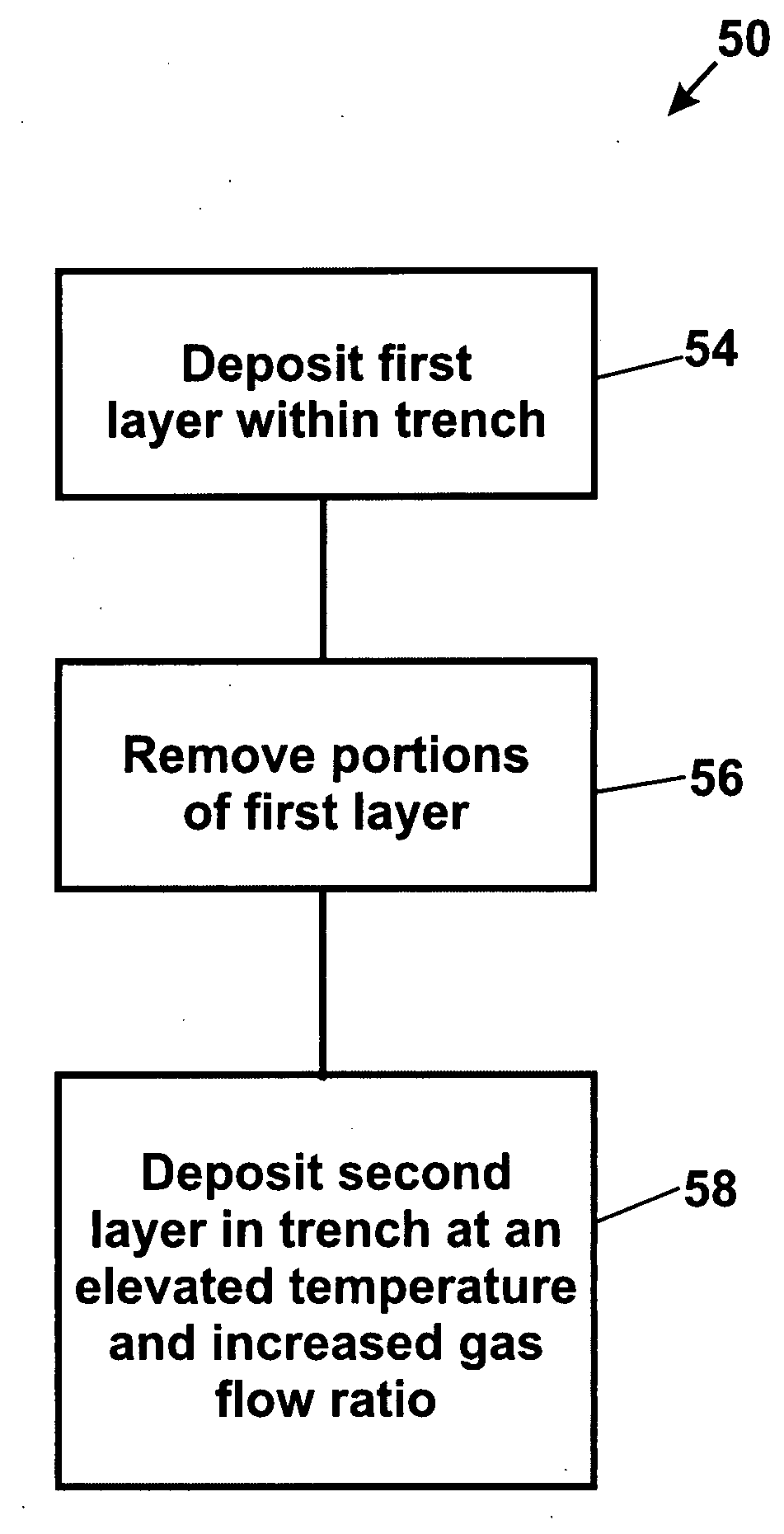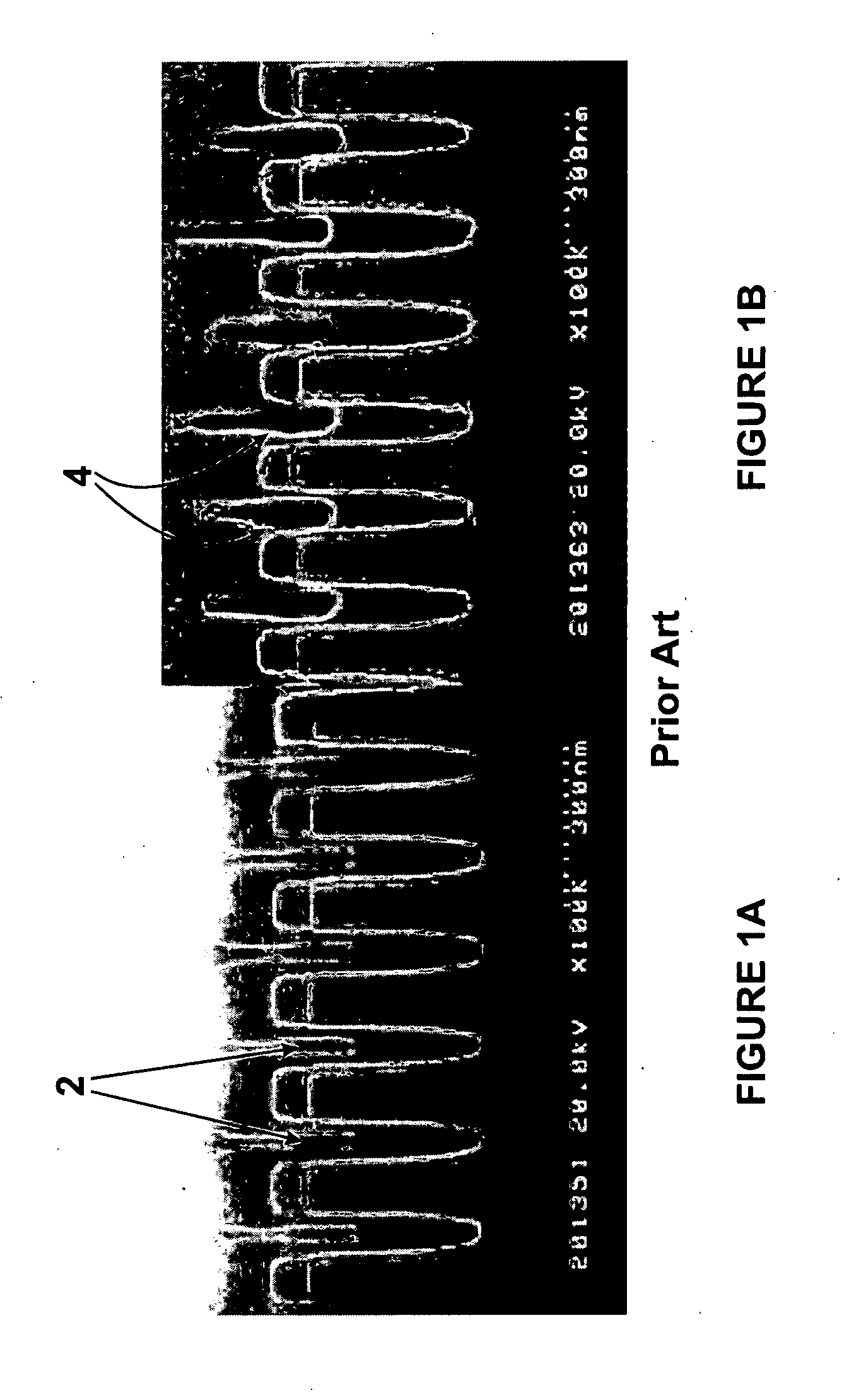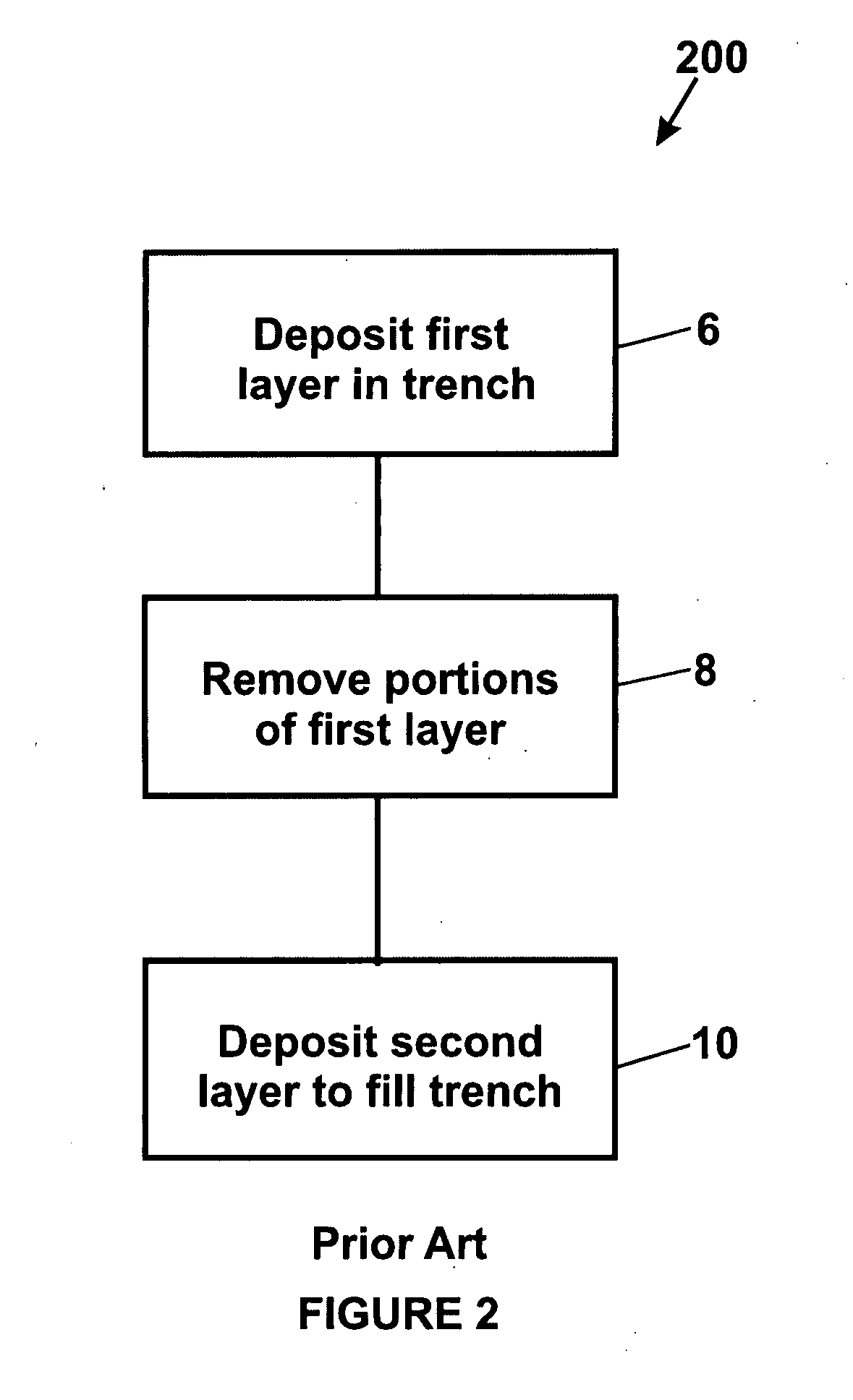Method with high gapfill capability and resulting device structure
a technology of high gapfill capability and resulting device structure, which is applied in the field of integrated circuits, can solve the problems of difficult process, difficult device smallness, and inability to meet the requirements of large-scale manufacturing, and achieves effective gapfill process, improved device reliability and performance of semiconductor circuits, and convenient use
- Summary
- Abstract
- Description
- Claims
- Application Information
AI Technical Summary
Benefits of technology
Problems solved by technology
Method used
Image
Examples
Embodiment Construction
[0022] The present invention is directed to integrated circuits and their processing for the manufacture of semiconductor devices. More particularly, the invention provides an CVD deposition method with high gapfill gapfill capability and a resulting device structure. Merely by way of example, the invention has been applied to making shallow trench isolation (STI) regions. But it can be recognized that the invention has a much broader range of applicability.
[0023]FIGS. 1A and 1B are scanning electron microscope (SEM) images of a cross-section of a silicon substrate showing voiding in a conventional trench filling process. A deposition process is used to fill the high aspect ratio trenches formed within the substrate. For example, a high aspect ratio trench is a trench where the ratio of the trench depth to the trench width is greater than 5:1. A trench with exemplary dimensions of a trench opening of 12 μm and a depth of 5000 Å can incur a number of problems when performing a depos...
PUM
 Login to View More
Login to View More Abstract
Description
Claims
Application Information
 Login to View More
Login to View More - R&D
- Intellectual Property
- Life Sciences
- Materials
- Tech Scout
- Unparalleled Data Quality
- Higher Quality Content
- 60% Fewer Hallucinations
Browse by: Latest US Patents, China's latest patents, Technical Efficacy Thesaurus, Application Domain, Technology Topic, Popular Technical Reports.
© 2025 PatSnap. All rights reserved.Legal|Privacy policy|Modern Slavery Act Transparency Statement|Sitemap|About US| Contact US: help@patsnap.com



